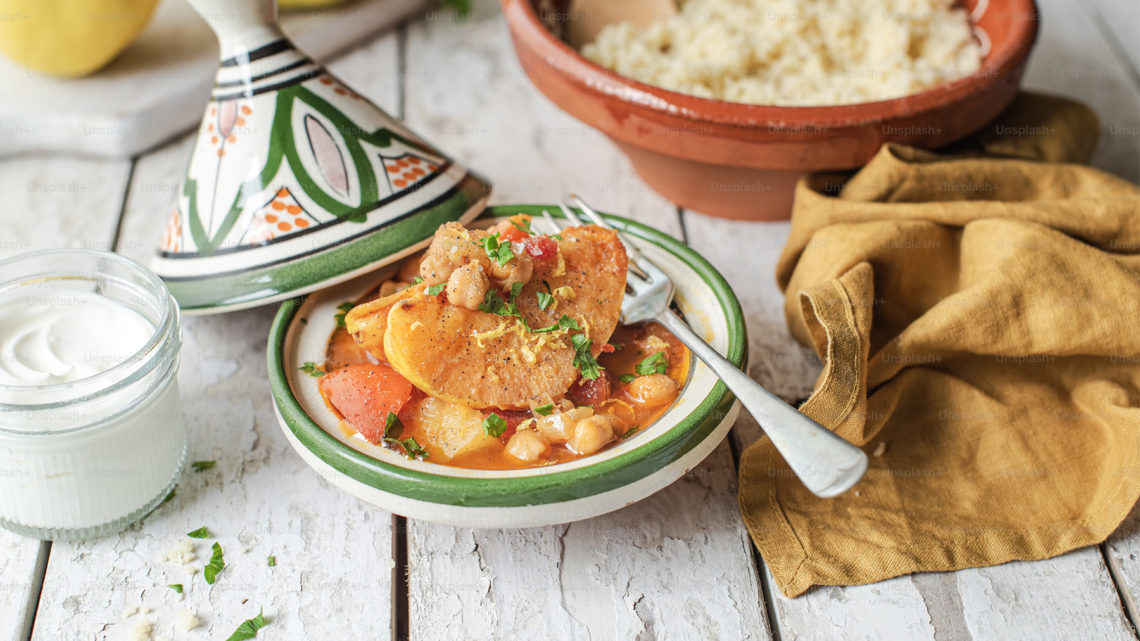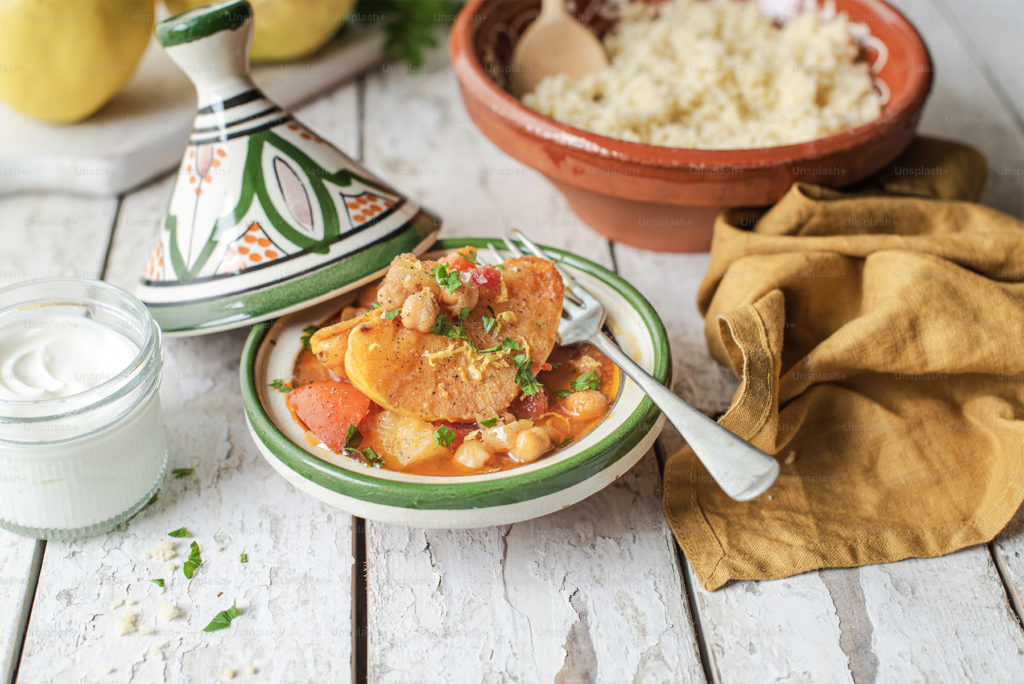
Discovering the Essence of Tajine
Uncover the rich history, unique flavors, and cultural significance of Moroccan Tajine, the slow-cooked stew that embodies the spirit of Moroccan cuisine.
Tajine, a culinary gem from Morocco, is both a dish and the iconic earthenware pot it is cooked in. This slow-cooked stew, rich in flavors and steeped in tradition, has roots that trace back to the Berbers of North Africa. Over centuries, Tajine has become a symbol of Moroccan hospitality and culinary ingenuity, playing a central role in the country’s culture and cuisine.

Specificities and Tastes of Tajine
Tajine is renowned for its complex and harmonious flavors. The cooking method, which involves slow-cooking meat and vegetables in a conical clay pot, ensures that the ingredients tenderize and meld together perfectly. The unique design of the pot allows steam to circulate, condense, and drip back onto the food, enhancing its moisture and flavor.
The taste of Tajine is a delightful balance of savory and sweet. Spices such as cumin, turmeric, ginger, paprika, cinnamon, and saffron are blended with dried fruits like apricots, prunes, or dates, creating a rich tapestry of flavors. This interplay of spices and fruits makes each bite of Tajine a unique culinary experience, reflecting the diverse influences on Moroccan cuisine.
Ingredients of Tajine
The ingredients used in Tajine can vary widely, reflecting the diversity of Moroccan culinary traditions. Common elements include:
- Proteins: Lamb, chicken, beef, or fish, often on the bone for extra flavor.
- Vegetables: Potatoes, carrots, zucchini, bell peppers, and tomatoes.
- Dried Fruits: Apricots, prunes, raisins, or dates for a touch of sweetness.
- Nuts: Almonds or pine nuts, sometimes toasted for added texture.
- Spices: Cumin, coriander, ginger, turmeric, paprika, cinnamon, saffron, and sometimes chili for heat.
- Aromatics: Onions, garlic, fresh herbs like cilantro and parsley.

Preparing Tajine
Preparing Tajine involves a few key steps to ensure the dish is flavorful and tender:
- Season the Pot: If using a new clay pot, it must be seasoned by soaking in water and then rubbing with oil before its first use to prevent cracking.
- Browning the Meat: Start by browning the meat in the base of the Tajine with some oil to develop a rich flavor.
- Layering Ingredients: Add onions, garlic, spices, and vegetables, layering them around the meat. Dried fruits and nuts can be added at this stage.
- Adding Liquids: Pour a small amount of water or broth to create steam. The unique shape of the lid will help retain moisture and concentrate flavors.
- Slow Cooking: Cover the Tajine and cook over low heat for several hours. This slow cooking allows the ingredients to tenderize and flavors to meld】.
Health Benefits and Nutrition
Tajine is not only a culinary delight but also offers numerous health benefits. The use of fresh vegetables, lean meats, and a variety of spices contributes to a nutritious meal. The slow-cooking method preserves the nutrients in the ingredients while the spices provide antioxidants and anti-inflammatory properties. Ingredients like garlic and ginger offer additional health benefits, such as boosting the immune system and improving digestion.

Tajine is much more than just a dish; it is a testament to Moroccan culinary heritage and cultural traditions. This slow-cooked stew, rich in flavor and history, brings together communities and families, fostering a sense of togetherness and sharing. Whether enjoyed in a bustling Moroccan market, a cozy family kitchen, or a sophisticated restaurant, Tajine offers a culinary experience that connects diners to the heart of Moroccan culture.
By savoring Tajine, one partakes in a tradition that has been perfected over centuries, appreciating the artistry and patience involved in its preparation. This iconic dish continues to enchant food lovers around the world, making it an essential part of any culinary journey through Morocco.
Related: Chefchaouen Food Tour, Morocco